Calla lily leaves will drip a mix of water and sap from their leaves on warm humid days. This is called ‘guttation’ where the plant gets rid of extra water, sap and nutrients through their leaves. You may notice drips on the end of canna lily leaves or marks on your furniture near indoor plants.
Guttation is a natural process that occurs most commonly during humid, warm weather or if the plant has been overwatered.
Outdoor calla lily plants can also drip water if they have gathered condensation on their leaves during the night or on a cool morning. This will look clear and will come from across the leaf rather than appearing on the tips.
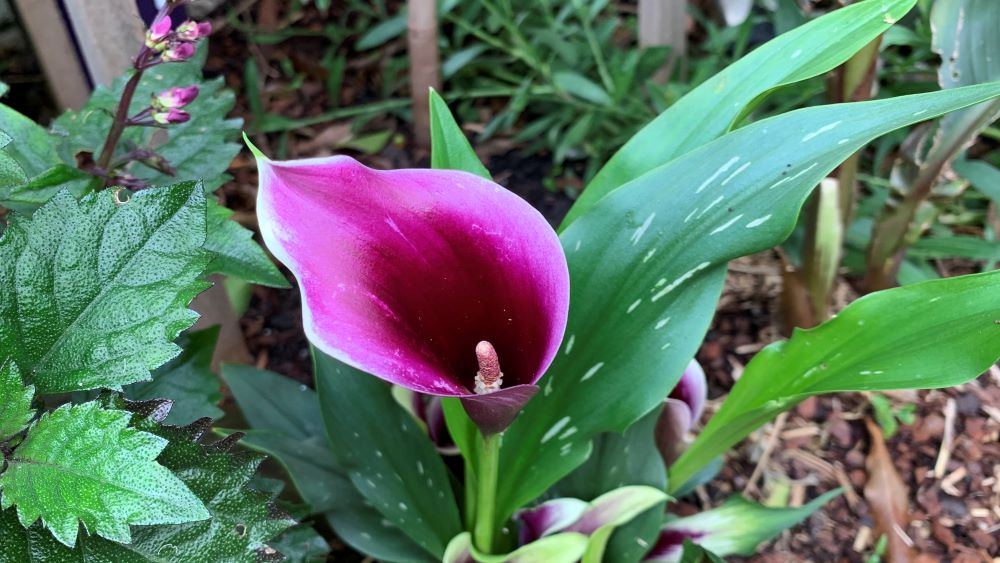
This article will explore why calla lily leaves will drip water, if this is a problem and what you can do to stop it.
Why outdoor calla lily leaves drip water
Outdoor calla lilies can drip water for two reasons, this is the natural guttation process or due to condensation on a cool morning. Condensation will look clear and usually dries quickly as soon as the sun appears. Condensation from the air will form across the leaf surface rather than on the edges and will happen when the weather is cool.
It is rare to get condensation on indoor plants but occurs mainly on outdoor calla lilies planted in open areas exposed to the cool morning air. Calla lilies grown undercover are also less likely to collect condensation or dew on their leaves.
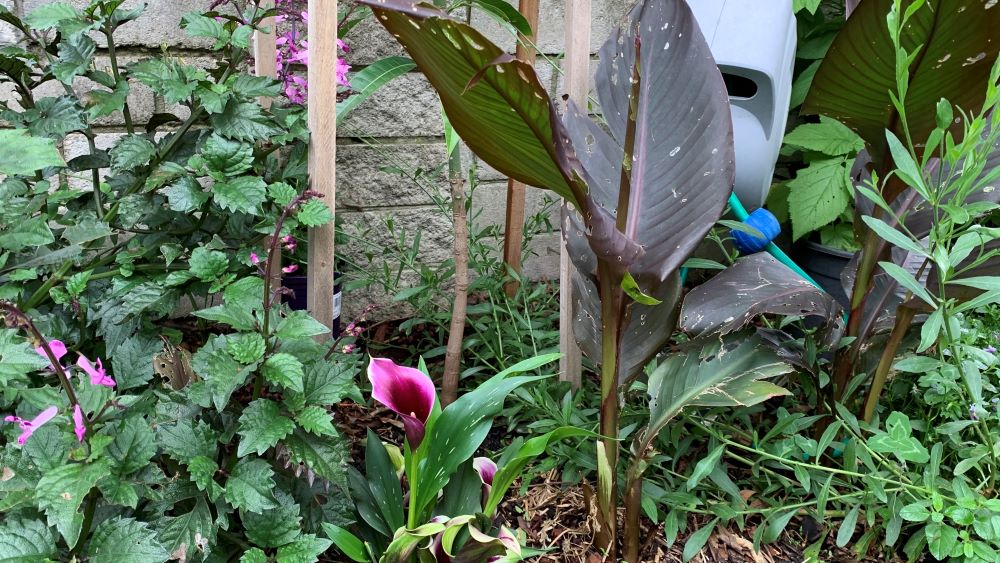
The other reason why calla lilies drip water is through the natural process of guttation. Plant will release excess water, nutrients and sap through their leaves which will form as drip on the ends of the leaves. These drips will usually leave a white mark when they dry on a dark surface or indoor furniture.
Guttation
Outdoor calla lilies will get rid of extra water and nutrients through the process of guttation where the plant will ‘sweat’ out extra water, sap and nutrients. This helps to balance out the water levels in the plant.
Guttation happens more frequently in warm, humid weather. It can also happen more often if the plant is overwatered. The extra water will be excreted through the leaves to help the plant avoid problems from absorbing too much water.
Is it normal for calla lily to drip water?
It is normal for calla lilies to drip and release water when the plant has too much. This causes no problems for the plants outside but is a sign that you may need to reduce your watering schedule.
For indoor calla lilies the water drips from guttation can drip down and make marks on your floor or furniture. To prevent calla lily from making marks on your furniture place a waterproof placemat underneath the plant if this happens regularly. Hot, humid summers are more likely to cause calla lily leaves to drip water.
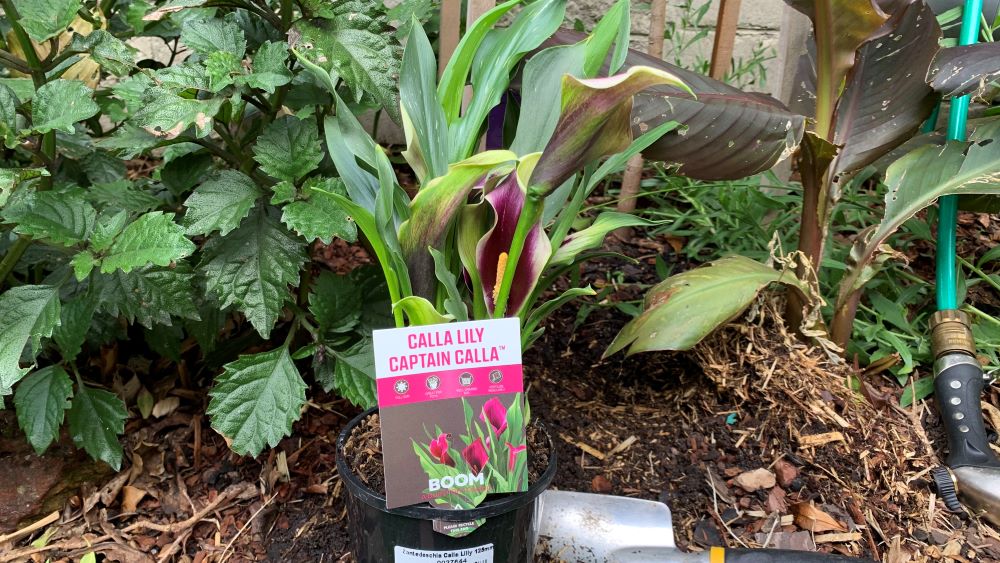
Marks are made from guttation because the drips from the leaves contain a mix of sap, minerals and water. This also happens to larger, tropical plants such as banana trees and monstera.
What causes calla lily leaves to drip water
There are some weather conditions that will increase the rate of water dripping from calla lily plants. Hot, humid weather, stress and overwatering are the top causes of guttation in calla lilies.
1. Hot, humid weather
Hot humid weather can cause a calla lily plant to sweat or drip water. This process allows the plant to release excess nutrients, water and sap built up in the plant. This natural process of guttation allows the plant to balance its water and nutrient levels.
2. Stress from repotting, moving or too much sun
Stress can cause calla lily to drip water when they are repotted, transported or they are suddenly moved into full sun. An indoor calla lily that is moved from full shade to full sun can sometimes drip water due to the change.
Transporting calla lily can also cause stress to the plant causing it to drip water. Taking the plant home from a nursery or delivering it as a gift to a friend can change the water balance, expose the plant to too much heat and cause it to drip water.
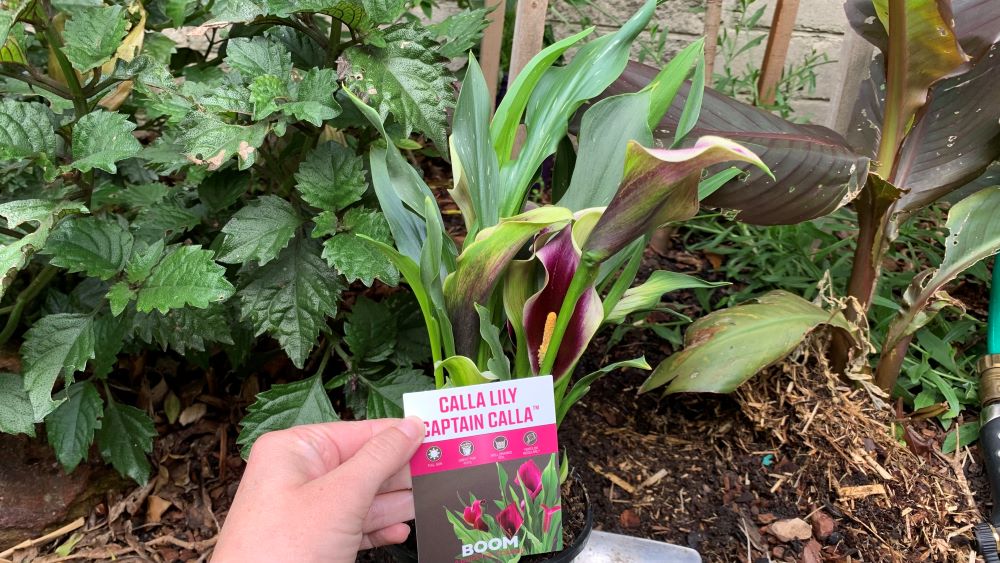
Calla lilies are hardy and can recover quickly. If the soil looks dry, water the plant thoroughly and plant it out into a garden bed so it can recover.
3. Too much water
Overwatering is the top cause of calla lilies dripping water. The plant will release excess water through the leaves mixed together with sap and nutrients to help the plant find balance.
To avoid overwatering only water calla lilies when the top 2 inches of soil feel dry. These are tropical plants and survive well with if they can dry out between watering.
To water indoor calla lilies take them over to your sink and thoroughly wet the soil allowing the water to drain through. This will help to avoid the roots sitting in water in the bottom of the pot and help to prevent overwatering.
How to stop calla lilies from crying, dripping and sweating
To stop calla lily plants from crying or dripping it is important to avoid overwatering. Only water calla lilies when the soil feels dry. Indoor calla lily plants will benefit from air movement so open a window if the day is warm and humid.
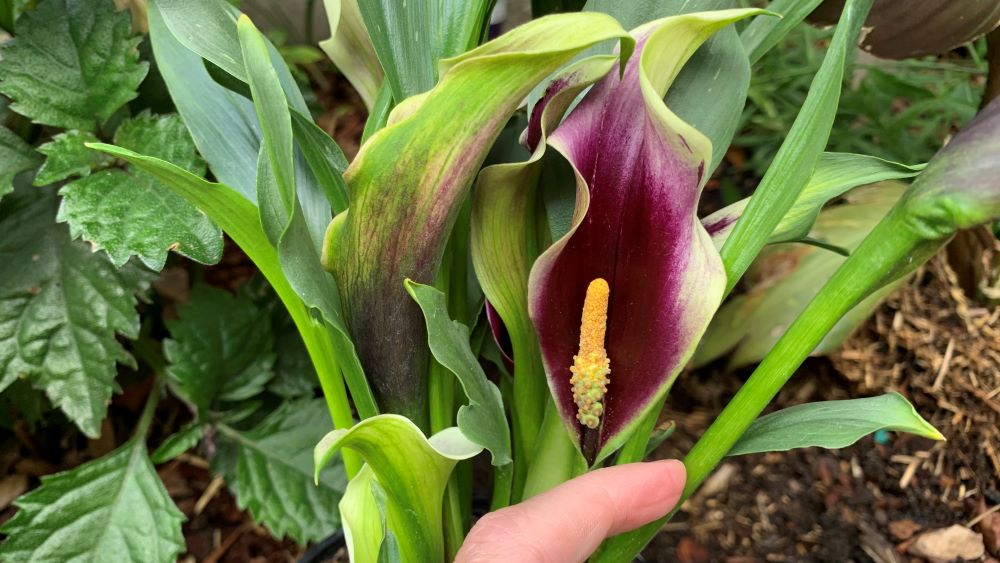
Will dripping from calla lily leaves harm the plant?
Dripping from calla lily leaves will not harm the plant. The drips can leave white marks on your pot or the table the plant is sitting on. If this happens often a placemat can help to catch the drips but it is best to adjust your watering and give the plant more air flow.
Is it dripping water from the plant or is it dew?
Dew can form on the leaves on outdoor calla lily plants, this usually happens in the morning and will dry when the sun appears. Water dripping from guttation can happen throughout the day, will leave white marks on the ground or leaves and happens more often when the weather is warm and humid.
Calla lily leaves dripping water | Summary
Calla lily leaves will drip water through the natural process of ‘guttation’ where excess water, sap and nutrients are released. Dripping can also occur on outdoor calla lily plants where condensation forms on the leaves on cold mornings and naturally drips off.
Both of these will not cause harm to the plant but is a sign you should check your watering schedule to avoid overwatering.
Happy growing.
I am an accredited practicing dietitian, experienced gardener and a dedicated cook. I love writing and sharing my experience so you can learn from my successes and mistakes.
